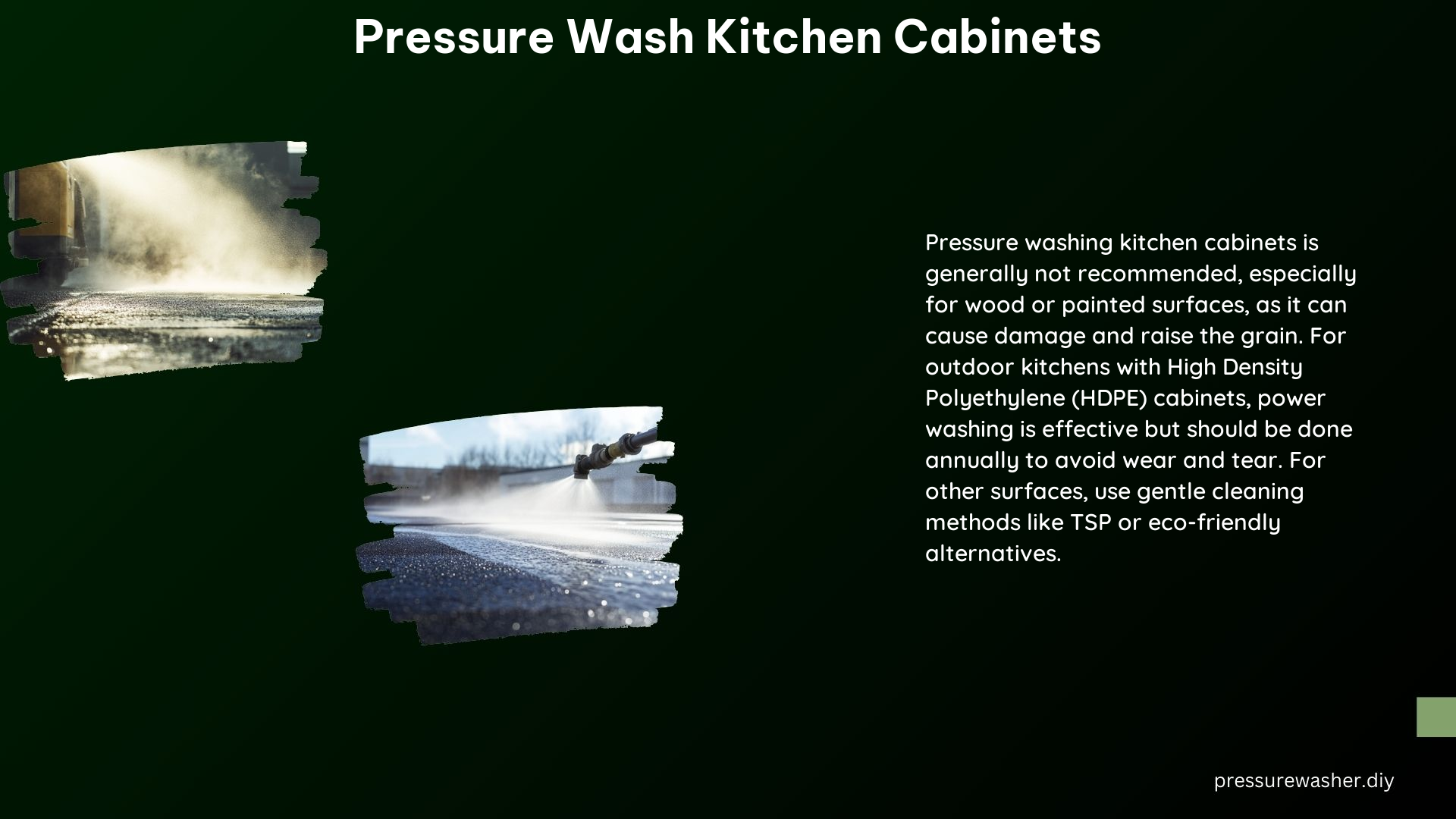Pressure washing kitchen cabinets can be an effective way to deep clean and restore the appearance of your kitchen, but it requires careful consideration and proper techniques to avoid damage. This comprehensive guide will provide you with the necessary information to pressure wash your kitchen cabinets safely and effectively.
Can I Use a Pressure Washer to Clean My Kitchen Cabinets?
Yes, you can use a pressure washer to clean your kitchen cabinets, but only if they are made of specific materials that can withstand the high pressure and water flow. High Density Polyethylene (HDPE) cabinets are the most suitable for power washing, as they are durable and can handle the pressure without damage. However, cabinets made of PVC, faux wood, or painted foam resin may be susceptible to damage from pressure washing.
Is It Safe to Pressure Wash Painted Kitchen Cabinets?

No, it is generally not recommended to pressure wash painted kitchen cabinets. The high pressure and water flow can easily strip the paint and damage the underlying wood, leading to a rough and uneven surface. Power washing can also cause the wood to swell and warp, compromising the structural integrity of the cabinets. If your kitchen cabinets have a painted finish, it is best to use gentler cleaning methods, such as hand-washing with a mild detergent or using a cabinet-safe degreaser.
Precautions to Take When Pressure Washing Kitchen Cabinets
When pressure washing your kitchen cabinets, it is essential to take the following precautions:
-
Material Compatibility: Ensure that your kitchen cabinets are made of a material that can withstand the high pressure and water flow of a pressure washer, such as HDPE. Avoid pressure washing cabinets made of PVC, faux wood, or painted foam resin.
-
Safety Precautions: Follow the same safety precautions you would take when using any outdoor power equipment, such as wearing protective eyewear, gloves, and appropriate clothing.
-
Cleaning Sequence: Clean the rest of your outdoor kitchen or patio area first to avoid re-cleaning the cabinets after the initial pressure washing.
-
Start from the Top: Begin cleaning from the top of the cabinets and work your way down to prevent grease and dirt from dripping onto the already cleaned surfaces.
-
Use a Degreaser: Attach a high-quality degreaser to the pressure washer nozzle to effectively remove stubborn grease and food remnants.
-
Rinse Thoroughly: Ensure that you rinse the cabinets thoroughly to remove all soap and degreaser residue, as any leftover chemicals can damage the cabinet surfaces.
Technical Specifications for Pressure Washing Kitchen Cabinets
When pressure washing your kitchen cabinets, it is essential to use the right equipment and settings to ensure optimal results and avoid damage. Here are the technical specifications to consider:
-
Pressure Washer Type: Use a pressure washer suitable for outdoor use, with a minimum pressure rating of 2,000 PSI (pounds per square inch) and a flow rate of at least 1.3 GPM (gallons per minute).
-
Pressure Setting: Adjust the pressure setting according to the material and condition of your cabinets. For HDPE cabinets, start with a pressure setting of around 1,500 PSI and gradually increase if necessary. Avoid using the maximum pressure setting, as it can cause damage.
-
Nozzle Type: Use a wide-angle, fan-tip nozzle to distribute the water pressure evenly across the cabinet surfaces. This will help prevent concentrated water jets from damaging the cabinets.
-
Distance: Maintain a safe distance of at least 12 inches from the cabinet surfaces to avoid direct, high-pressure water contact that could cause damage.
-
Cleaning Solution: Use a mild detergent or degreaser specifically formulated for use with pressure washers. Avoid harsh chemicals that could discolor or etch the cabinet surfaces.
Additional Tips for Cleaning Kitchen Cabinets
In addition to pressure washing, there are other effective methods for cleaning and maintaining your kitchen cabinets:
-
Regular Maintenance: Perform frequent wipe-downs and deep clean your cabinets every few months to prevent the buildup of grease, dust, and grime.
-
Test Cleaning Solutions: Before applying any cleaning solution to the entire cabinet surface, test it on a small, inconspicuous area to ensure it does not cause discoloration or damage.
-
Clean from Top to Bottom: When hand-cleaning your cabinets, work from the top down to prevent dirt and grime from spreading to the already cleaned surfaces.
-
Use Microfiber Cloths: Opt for microfiber cloths when cleaning your cabinets, as they are highly effective at trapping dirt and grime without scratching the surfaces.
By following these guidelines and technical specifications, you can safely and effectively pressure wash your kitchen cabinets, ensuring they remain clean, well-maintained, and looking their best.
